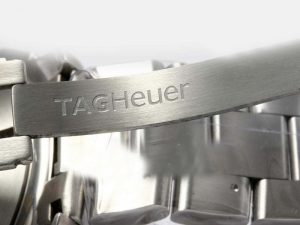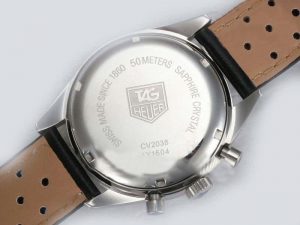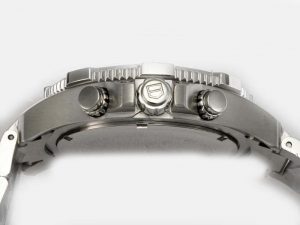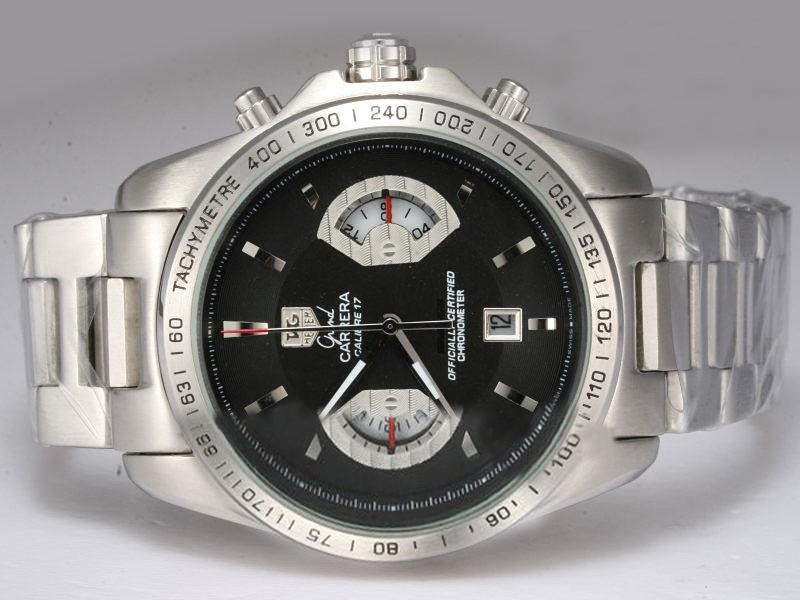As we all know, during “Geneva Watch Week 2019” hold in Switzerland, there was only one new product to be introduced by TAG Heuer: the Carrera Calibre Heuer-02T Tourbillon Nanograph, which is a variation on the existing TAG Heuer Carrera Heuer-02T Tourbillon Chronograph (aBlogtoWatch review here). Actually, this new Nanograph is not only just a cosmetic novelty of the brand’s excellent-priced Swiss-made tourbillon but also shows off a new component technology that could be used in many other TAG Heuer and LVMH Group watches.
Guy Semon has cooperated well with TAG Heuer replica and the LVMH Group for more than ten years, who is engaged in developing novel technologies for an industry in need of regular innovation. Fortunately, Guy Semon was free to experiment and test with a university-style laboratory set up for him under the LVMH Watch Division. One of the first major projects I heard about was Semon had an investigation into silicon. In a word, the replica watch industry is very interested in new materials which can be used to solve old problems in traditional mechanical timekeeping anyway. 

Though silicon is an important material for today’s modern watchmaking along with plenty of benefits than metal parts, it also has two main disadvantages: the challenge of mass-production, and relative fragility, which can make shock-resistance problematic, particularly in terms of the production of hairsprings (the most difficult part of a watch’s movement to manufacture). Therefore, Semon set his sights on other materials and techniques to produce hairsprings that could outperform metal alternatives with less price. At the same time, it needed to be as good as, or better than, silicon.
The innovation of the Carrera Heuer-02T Nanograph is the hairspring, which appears ordinary gray to the naked eye. This hairspring simply referred to as a “carbon hairspring” is the achievement of Semon’s patient efforts to explore a hairspring material and production technique that might finally replace both metal and silicon, and not just inexpensive timepieces. Compared to silicon, the most advantage of this particular carbon polymer is its simplicity for mass production (lower rejection rates due to broken parts) and more shock-resistance due to its native elasticity.
The carbon hairspring benefits from being both crystalline (for hardness) and flexible (due to its nanotube structure) just like silicon hairsprings. It is this nanotube structure of the material that leads itself to TAG Heuer’s “Nanograph” name for the watch. Another benefit to the elastic nature of this hairspring is that it can be more easily adjusted for a particular movement, which meaning that it’s easier to assemble and regulate accuracy for replica watches with carbon hairsprings, from an industrial standpoint.
The new regulation system in the Nanograph watch uses the carbon hairspring, as well as a steel and aluminum element for the balance wheel. The anodized aluminum parts can be colored, which adds fashion to the products to some degree. It’s shown here in lime green, along with the two small sections of lume-painted material in the regulation system (something you don’t see very often). According to Semon’s sharing, the carbon hairsprings could easily be the replacement of metal hairsprings without much effort in a series of existing movements, also without other appreciable changes to the movement, making sure that they can operate correctly. This means that moving forward, LVMH might make a business with others by selling these carbon hairsprings, also including other movements which aren’t exclusively designed to use them.
At present, the Carrera Heuer-02T Tourbillon is the most exclusive version ever produced by TAG Heuer, maybe which is why the carbon hairspring made its debut here. It’s undoubtedly that TAG Heuer’s tourbillons remain the best value on the market if you want a high-performance Swiss-made tourbillon, the price of which is only approximately 1/3 of many competitor Swiss-made tourbillons. You do lose hand-finishing for the tourbillon parts, but these Chronometer-certified and durable tourbillons have beyond so much of the competition. Normally, these TAG Heuer Tourbillons retail start at around $17,000. 
Although the Carrera Heuer-02T Tourbillon Nanograph is a little bit expensive, but not very much. With its repeating hexagons, the futuristic design pays a tribute to the construction of the carbon hairsprings, as is the use of carbon for the 45mm-wide Carrera case material. But you’d think the watch was designed for a soccer fan if you didn’t know about these little nuances. The 100-meter water-resistant case (capped with sapphire crystals) is made mainly from PVD black-coated titanium, along with forged carbon for the bezel and lug structures (as well as for parts of the strap-deployment buckle). The Nanograph timepiece looks interesting and filled with vigor, but not fit for everyone due to its design. As far as I know, it’s also not a limited edition. Obviously, more and more wonderful chronographs with carbon hairsprings will be introduced by TAG Heuer shortly. And more and more watch fans will accept it enthusiastically, right?
